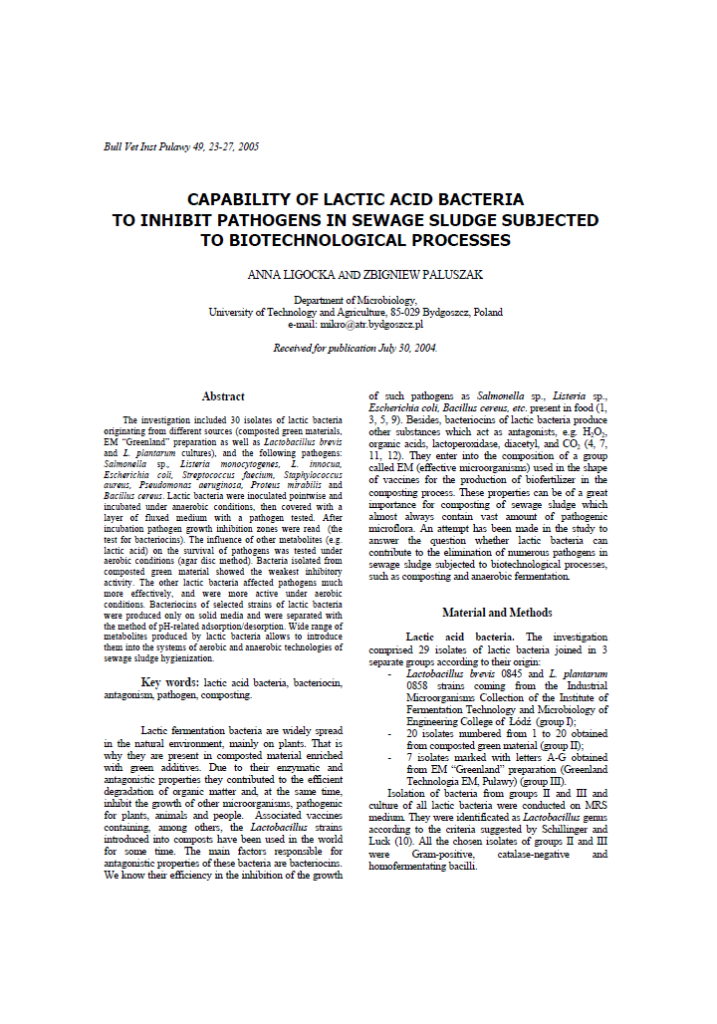Still have questions?
You could not find the information you were looking for? Please contact our helpdesk team of experts for direct and individual support.

Sanihub - search - Capability of Lactic Acid Bacteria to Inhibit Pathogens in Sewage Sludge Subject to Biotechnological Processes
Author: Ligocka, A., Paluszak, Z.
Year: 2004
Publisher: University of Technology and Agriculture, Bydgoszcz, Poland
The investigation included 30 isolates of lactic bacteria originating from different sources (composted green materials, EM “Greenland” preparation as well as Lactobacillus brevis and L. plantarum cultures), and the following pathogens: Salmonella sp., Listeria monocytogenes, L. innocua, Escherichia coli, Streptococcus faecium, Staphylococcus aureus, Pseudomonas aeruginosa, Proteus mirabilis and Bacillus cereus. Lactic bacteria were inoculated pointwise and incubated under anaerobic conditions, then covered with a layer of fluxed medium with a pathogen tested. After incubation pathogen growth inhibition zones were read (the test for bacteriocins). The influence of other metabolites (e.g. lactic acid) on the survival of pathogens was tested under aerobic conditions (agar disc method). Bacteria isolated from composted green material showed the weakest inhibitory activity. The other lactic bacteria affected pathogens much more effectively, and were more active under aerobic conditions. Bacteriocins of selected strains of lactic bacteria were produced only on solid media and were separated with the method of pH-related adsorption/desorption. Wide range of metabolites produced by lactic bacteria allows to introduce them into the systems of aerobic and anaerobic technologies of sewage sludge hygienization.
"*" indicates required fields
You could not find the information you were looking for? Please contact our helpdesk team of experts for direct and individual support.


This website uses cookies so that we can provide you with the best user experience possible. Cookie information is stored in your browser and performs functions such as recognising you when you return to our website and helping our team to understand which sections of the website you find most interesting and useful.
Strictly Necessary Cookie should be enabled at all times so that we can save your preferences for cookie settings.
If you disable this cookie, we will not be able to save your preferences. This means that every time you visit this website you will need to enable or disable cookies again.
This website uses Google Tag Manager to collect anonymous information such as the number of visitors to the site, and the most popular pages.
Keeping this cookie enabled helps us to improve our website.
Please enable Strictly Necessary Cookies first so that we can save your preferences!
More information about our Cookie Policy
